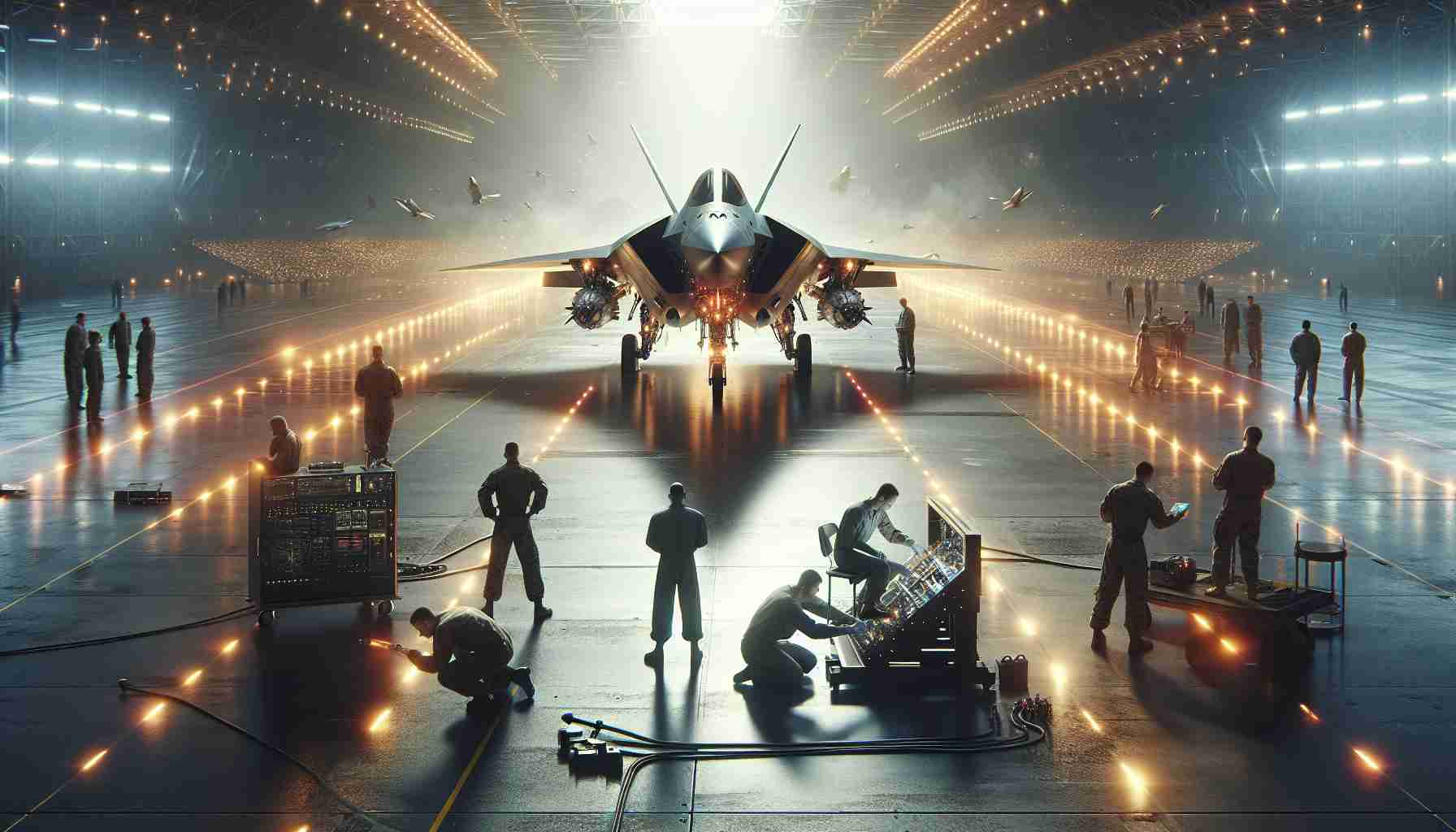- The USMC is implementing the 2025 Aviation Plan with Project Eagle to enhance operational readiness.
- Key concepts include Distributed Aviation Operations and Decision-Centric Aviation Operations.
- Cutting-edge technologies like artificial intelligence and autonomous systems are integral to the strategy.
- Skills development for aircrew and maintenance teams is a priority to ensure immediate combat readiness.
- Innovative strategies such as additive manufacturing and digital twin modeling will improve supply chain efficiency.
- Major upgrades are planned for essential aircraft, including the F-35 and MV-22 Osprey.
- The integration of unmanned aerial systems marks a significant advancement in military tactics.
- Project Eagle represents a transformative leap in how the USMC prepares for modern warfare.
The United States Marine Corps (USMC) is soaring into the future with its groundbreaking 2025 Aviation Plan, unveiling Project Eagle as a dynamic strategy aimed at enhancing operational readiness in an unpredictable world. This initiative introduces two pivotal concepts: Distributed Aviation Operations and Decision-Centric Aviation Operations. These frameworks emphasize harnessing cutting-edge technologies, such as artificial intelligence, autonomous systems, and robust digital command and control, pushing the boundaries of military aviation.
Col. Derek Brannon, a key figure in the initiative, emphasizes that Project Eagle not only builds on existing progress but also embraces transformative technologies to ensure that the USMC can deliver combat power across every domain.
In a world where readiness is paramount, the plan guarantees that current fleet operations can swiftly pivot to engage in combat. The USMC is committed to ensuring that its aircraft, crew, and maintenance teams are primed and equipped to “fight tonight.” Furthermore, as the Marines adopt new technologies, they will focus on cultivating skilled aircrew and support staff.
Project Eagle doesn’t stop at maintenance; it encourages innovative strategies like additive manufacturing and digital twin modeling to enhance the supply chain efficiency.
Key aircraft, including the F-35 and MV-22 Osprey, will undergo significant upgrades, while the integration of unmanned aerial systems like the MQ-9A Reaper signifies a leap into the future of warfare. The Marine Air Command and Control System will also adapt with advanced radar technologies, solidifying the idea that the USMC is steadfast in its mission to ensure unparalleled operational superiority.
In essence, Project Eagle isn’t just a plan—it’s a revolution, redefining how the Marines prepare for tomorrow’s battles.
Unveiling the Future: How Project Eagle Transforms USMC Aviation Operations
The United States Marine Corps and Project Eagle: A Leap into Next-Gen Warfare
The United States Marine Corps (USMC) is taking significant strides into the future with its 2025 Aviation Plan, featuring Project Eagle. This innovative initiative aims to revolutionize how the Marine Corps approaches military aviation, integrating advanced technologies and pioneering strategies to enhance operational readiness in an increasingly volatile global environment.
Key Features of Project Eagle
1. Distributed Aviation Operations: This concept allows for greater flexibility in how the Marines deploy their aerial assets, enabling simultaneous operations across multiple domains.
2. Decision-Centric Aviation Operations: Enhancing decision-making processes through the use of artificial intelligence and data analytics ensures that commanders receive up-to-the-minute situational awareness.
3. Pivotal Technology Integration:
– Artificial Intelligence: AI will play a crucial role in data analysis and operational planning.
– Autonomous Systems: Unmanned aerial vehicles (UAVs) will enhance reconnaissance and combat capabilities without risking crewed aircraft.
– Enhanced Command and Control: Implementation of robust digital command systems allows for quick adjustments and real-time communication during missions.
4. Innovative Manufacturing Techniques:
– Additive Manufacturing: 3D printing technologies will streamline logistics by enabling parts to be produced on-demand, reducing downtime.
– Digital Twin Modeling: This technology allows for the creation of virtual models of aircraft, simulating performance and maintenance needs.
5. Aircraft Enhancements: Key assets like the F-35 and MV-22 Osprey will see significant upgrades, ensuring they remain at the forefront of technological advancements in warfare.
Insights on Project Eagle
The USMC’s commitment to staying ahead of modern warfare challenges is evident in its approach. The combination of traditional aviation with cutting-edge technologies represents a major shift in military strategy.
Furthermore, Project Eagle emphasizes the importance of training. As new systems are adopted, there will be a focus on fostering a skilled workforce capable of operating advanced technologies effectively.
Key Questions about Project Eagle
1. How does Project Eagle impact the training of Marine Corps personnel?
Project Eagle places a strong emphasis on the continuous training and development of Marine Corps personnel, ensuring they are proficient in operating new technologies such as AI, UAVs, and advanced systems. This includes immersive training environments utilizing simulations and augmented reality, preparing Marines for complex combat scenarios.
2. What are the expected outcomes of implementing Distributed Aviation Operations?
The introduction of Distributed Aviation Operations is expected to increase mission flexibility and responsiveness, allowing the USMC to deploy aircraft across various domains more effectively. This approach aims to improve overall force survivability by dispersing assets and enhancing tactical maneuverability.
3. How will Project Eagle influence USMC procurement strategies?
Project Eagle will likely reshape procurement strategies by prioritizing technologies that maximize operational efficiency and sustainability. This includes partnerships with tech companies for cutting-edge systems and a focus on integrating dual-use technologies to boost military and civilian operational capabilities.
Related Links
For more information about the United States Marine Corps and its initiatives, visit USMC Official Website.



